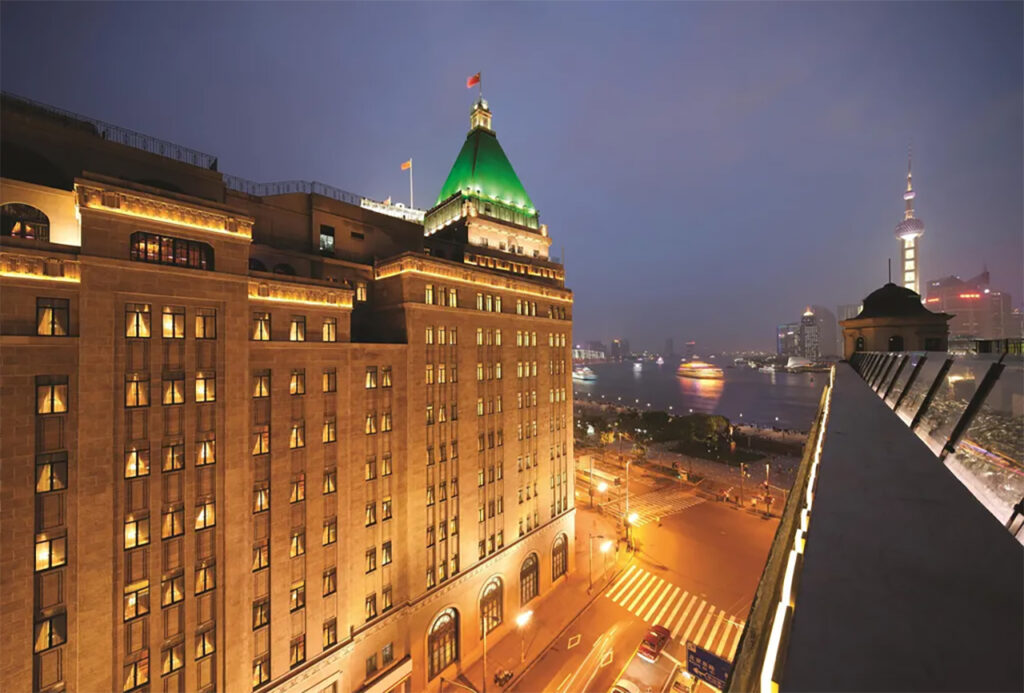“Dream now, travel later” has been the mantra of China-facing destination marketing organizations, one proclaimed loudly online, since early 2020. And understandably so given the trickle of outbound Chinese visitors and related budget constraints. But in the past month, tourism representatives of regional destinations including Hong Kong, Macau, and Thailand have rebooted offline activities, optimistic about an imminent return of Chinese tourists.
Promotional efforts typically highlight the presence of a country’s culture in major Chinese cities, largely focusing on cuisine and architecture. One such initiative comes from the Israel Government Tourism Board (IGTB) whose “Experience Now, Travel Later” campaign encourages Chinese to explore the legacy of Jewish people in China. “We felt ‘Dream Now, Travel Later’ activities have been outdated,” Roy Kriezman, IGTB’s attaché to China, tells Jing Travel. “Israel is the start-up nation and we’re used to thinking out of the box to develop new strategies.”

A monument at the Shanghai Jewish Refugees Museum, bearing the names of 13,732 Jewish refugees lived in the city during World War II. Image: IGTB on WeChat
Perhaps surprisingly, Jews have a rich and extensive history in China, one that can be broadly separated into three chapters: Persian merchants who settled in Kaifeng, Henan province, during the Song dynasty; Russian and Eastern European Jews who moved to northeastern China, centered in Heilongjiang province’s Harbin, upon the completion of Chinese Eastern Railway in the late 1800s; and the vibrant Jewish diaspora that Shanghai harbored for much of the first half of the 20th century. IGTB’s campaign explores the modern-day remnants of these last two communities.
The campaign

The North Building of Shanghai’s Peace Hotel, constructed by Sir Victor Sassoon, a British Sephardic Jew who contributed to the city’s real estate boom in the early 20th century. Image: IGTB on WeChat
IGTB ran a series of posts on its WeChat and Weibo accounts detailing a “checklist” of buildings in Shanghai, Tianjin, and Harbin with Jewish heritage, which it promoted through media channels and key opinion leaders (KOLs) it works with. This included former synagogues in Harbin and Tianjin and an old theatre and public school in Shanghai with posts also providing historical background on key figures and developments of the Jewish communities.
The campaign included a call-to-action with fans encouraged to connect to IGTB’s social platforms by uploading videos and photos of the sites with select users rewarded with a package of Israeli dates or a bottle of Israeli wine.
In conversation with IGTB’s attaché to China

IGTB’ “Experience Now, Travel Later to Israel” campaign features a “checklist” of buildings in Shanghai, Tianjin, and Harbin with Jewish heritage.
Jing Travel: What’s the backstory to the “Experience Now, Travel Later to Israel” campaign?
Kriezman: More than a year after COVID-19 erupted, we had to find new innovative ideas to let our target audience experience a bite of Israel. We gathered information about Jewish heritage sites in China connected to culture and architecture, and developed a day tour in Shanghai related to the history of the Jewish Israeli refugees who lived in Shanghai during the 1930s. We turned this day tour into an online activity and called on Chinese participants to upload their photos from visiting Jewish heritage sites in China. We promoted the campaign via media channels, KOLs, and our official social media channels.
JT: What are you hoping to achieve through the campaign?
Kriezman: We hope participants enjoy our activity, and learn more about this amazing heritage and the relationship between China to Israel. [They can] “grab a bite” of Israel and start preparing their trip to Israel when the borders reopen. Hopefully, they can see the spectacular country we have first-hand.
JT: Most DMOs remain focused on online activities, what’s the value of offline campaigns at a time of limited outbound travel?
Kriezman: First of all, I believe webinars and pure online activities are not so beneficial right now in China. The situation in China is very stable and we found people prefer to meet face-to-face and experience new activities rather than staying home in front of a screen. Of course, we’ve launched many online activities, but preparing such a tour in China and connecting it to the Israeli and Jewish culture is working and I really hope the participants enjoy and learn from it.
The future of Chinese tourism in Israel
Overall, 2019 was Israel’s most successful tourism year. It welcomed more than 4.5 million tourists, including 150,000 Chinese, a 50 percent year-on-year increase. This growth has been backed by Chinese citizens being eligible for 10-year visas and the expansion of non-stop flights between the two countries.
Before the intervention of COVID-19, IGTB had set a goal of receiving 200,000 Chinese tourists in 2020 and had begun planning big marketing activities and opening China offices to expand its market presence. Its pandemic pivot has included collaborating with KOLs to launch destination livestreams, monthly events that draw an average of 1.5 million viewers.
IGTB has been watching the changing habits of domestic Chinese travel with interest and believes it’s well positioned to capitalize on family travel, car rental travel, and the emerging popularity of outdoor sports, though as Kriezman puts it, “Our main target is to emphasize that we’re in China for the long term; we’re running a marathon, not a sprint.”



